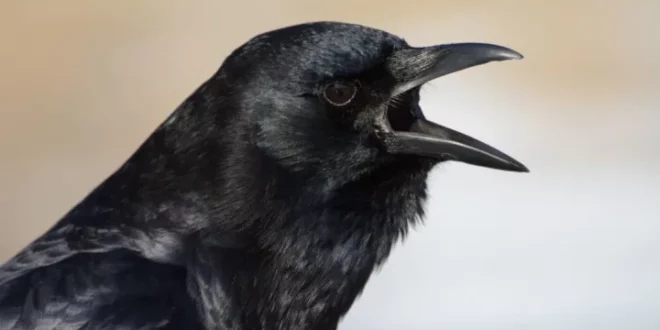Crows are known for their distinctive cawing sound, which is often associated with their presence. However, there are instances when crows emit a different type of vocalization that resembles the sound of a crying human. This peculiar behavior has intrigued researchers and bird enthusiasts alike, prompting them to investigate the reasons behind this phenomenon. In this article, we will delve into the various theories and explanations surrounding why crows cry like humans.
The Vocal Repertoire of Crows
Crows are highly intelligent birds with a complex vocal repertoire. Their vocalizations serve various purposes, including communication within their social groups, establishing territory, and warning others of potential threats. The most common sound associated with crows is their caw, which is used for a range of purposes, such as identifying themselves to other crows and signaling danger.
However, there are occasions when crows produce a vocalization that closely resembles the sound of a crying human. This sound is often described as a high-pitched, wailing cry that can be quite unsettling to hear. It is important to note that not all crows exhibit this behavior, and it tends to be more prevalent among younger birds.
Possible Explanations
1. Imitation: One theory suggests that crows cry like humans as a form of imitation. Crows are highly adaptive and have been observed mimicking the sounds of other animals and even human voices. It is possible that they have learned to imitate the crying sound from their surroundings, such as hearing human infants or distressed animals.
2. Attention-seeking: Another explanation proposes that crows cry like humans to attract attention. Crows are social animals that live in close-knit family groups. By producing a sound that resembles a crying human, they may be attempting to elicit a response from other crows or even humans. This behavior could serve as a way to communicate distress or to signal the need for assistance.
3. Emotional Expression: Crows are known to be highly intelligent and emotionally complex creatures. Some researchers believe that crying-like vocalizations in crows may be a form of emotional expression. Just like humans, crows experience a range of emotions, including sadness and distress. By crying like humans, they may be expressing their emotional state to others in their group.
4. Environmental Factors: It is also possible that certain environmental factors influence the crying-like behavior of crows. For instance, crows may cry in response to specific sounds or stimuli in their surroundings that trigger a particular emotional response. Further research is needed to determine if there are any consistent patterns or triggers that lead to this behavior.
Research and Observations
Scientists have conducted various studies and observations to gain a better understanding of why crows cry like humans. One study conducted by researchers at the University of Vienna found that captive crows were more likely to produce crying-like vocalizations when they were separated from their social group. This suggests that the behavior may be linked to social bonding and the need for companionship.
Another study conducted by researchers at Cornell University focused on the acoustic properties of crying-like vocalizations in crows. They found that these vocalizations had distinct acoustic features that set them apart from other crow vocalizations. This research indicates that crying-like vocalizations may serve a specific purpose within the crow’s communication system.
Conclusion
The phenomenon of crows crying like humans remains an intriguing topic for researchers and bird enthusiasts alike. While there are several theories and explanations surrounding this behavior, further research is needed to provide a definitive answer. Whether it is imitation, attention-seeking, emotional expression, or influenced by environmental factors, the crying-like vocalizations of crows highlight their complex communication abilities and emotional intelligence. Understanding these behaviors not only sheds light on the fascinating world of crows but also deepens our appreciation for the diverse ways in which animals communicate and express themselves.
 HammBurg Be informed with latest news, reviews, entertainment, lifestyle tips, and much more.
HammBurg Be informed with latest news, reviews, entertainment, lifestyle tips, and much more.




